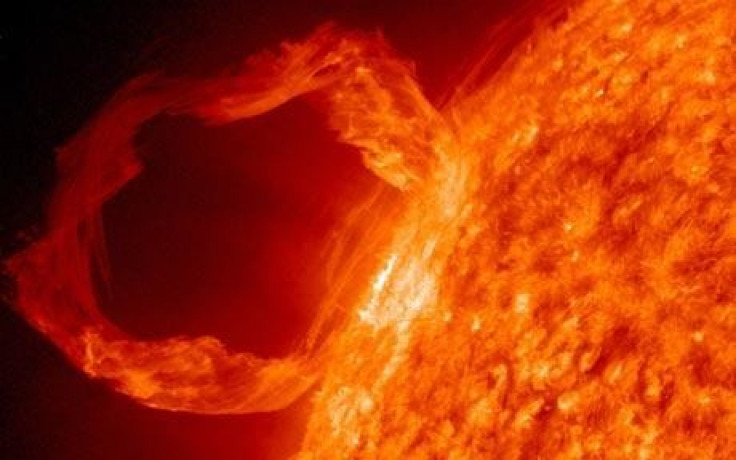Increasingly Powerful Solar Storms Could Disrupt Technology on Earth

Power grids, GPS systems and satellites could be among the technologies affected by surges of energy released by the sun's swelling magnetic field, according to the National Oceanic and Atmospheric Administration (NOAA).
The sun is essentially a ball of gas with a magnetic field at its core, and that field regularly expands and contracts in what is dubbed the "solar cycle." It is currently about a year into a strengthening phase, which is expected to peak around July 2013. As a result, the increasingly volatile magnetic field will likely cause more eruptions on the sun's surface.
"The consequence of a stronger magnetic field is it becomes concentrated in certain parts of the sun and it becomes unstable," said Joe Kunches, a space scientist with the NOAA. "These contorted and somewhat uncomfortable magnetic fields want to return to a more familiar state and in doing so they give off energy."
Such eruptions come in two parts. The first is a quick burst of energy, known as a solar flare, that Kunches likened to a bolt of lightning for its sudden and quickly dissipating intensity. Those flares signal an event called a "coronal mass ejection" because it blows off part of the the sun's outer atmosphere -- also called its corona -- that poses a greater hazard to systems on earth.
Recently developed technology allows scientists to follow the trajectory of those ejections -- what Kunches described as "thick clouds of gas, basically" -- and last week the NOAA warned that three of them appeared to be headed for earth, leading people to prepare for the fallout that can occur when a large pulse of energy crashes into the earth's magnetic field.
"The earth's magnetic field takes a big shot, and the way it deals with that we call a storm," Kunches said. "It starts to generate currents and becomes very irregular in terms of the distribution of particles that are already there."
There are multiple possible effects. Systems like GPS that rely on transmitters communicating with satellites could be disrupted by disturbances in the ionosphere, a layer of charged particles that lies between the earth's surface and the satellites' orbits. Satellites could also be slowed or thrown off course, something that Kunches pointed out would be a concern not just for people trying to navigate with their GPS' but for the defense industry's array of surveillance satellites.
Magnetic storms have caused electrical blackouts in the past. Those responsible for operating power grids will be on alert, prepared to take measures like postponing maintenance or keeping the entire grid operational so a single unit is not overwhelmed by a surging current.
"Because the overhead magnetic field is changing, that will cause a current flow and these geomagnetic induced currents are harmful to electric power grids, so power grids operators need to be prepared," Kunches said.
That may sound dire, but it is nothing new. Magnetic storms are a part of a regular solar cycle for which there is ample precedent.
"It's not a debatable point," Kunches said. "The grid operators know this can occur and can take steps to mitigate this potential damage."
--
Note: An earlier report on solar eruptions contained incorrect information. The International Business Times regrets the error.
© Copyright IBTimes 2024. All rights reserved.











